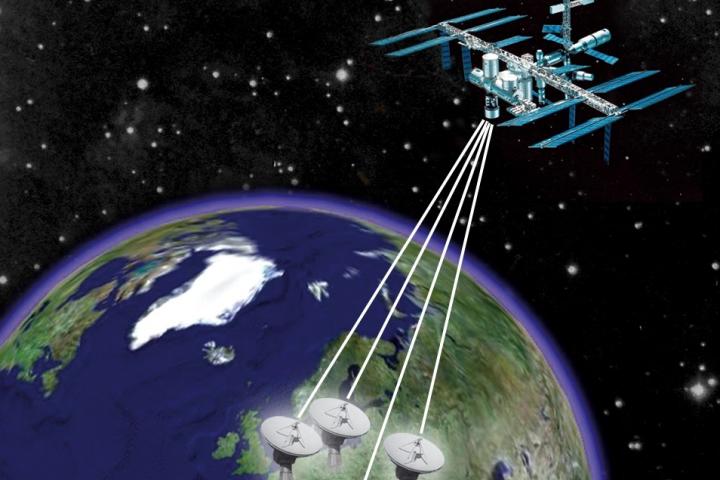
"This is the result of many years of ESA-funded efforts, which have also been reflected in several student qualification papers of different stages," says one of the detector developers, Josef Blažej from the Department of Laser Physics and Photonics at CTU Faculty of Nuclear Sciences and Physical Engineering (FNSPE KLFF). "There will now be a phase of several months during which the experimental module will first be fixed in place and then tested. It should be put into full operation at the end of the year," Blažej describes the immediate schedule.
How does ACES work?
ACES is equipped with two extremely accurate atomic clocks: the laser-cooled PHARAO caesium clock and the SHM hydrogen maser. These clocks can measure time to 16 decimal places. The aim is to compare time data from the ISS with data from ground stations to detect even slight differences caused by the Earth's gravitational field. Routine daily comparisons are provided by a microwave communication link.
The ELT detector, developed at the nuclear faculty of CTU, plays a key role in this process. It uses laser beams to measure the precise timing of signal transmissions between the ISS and ground stations. By operating in the optical domain, it allows to calibrate the variable delays of the microwave link and make the whole measurement more precise. Unlike microwaves, however, it requires cloud-free weather.
"The ELT detector has unique features along with its basic functionality. It is radiation resistant, especially against neutron flux. It passively compensates for changes in its internal delay over a wide temperature range with an accuracy of a few picoseconds. It optically balances the intensity at different angles of the incident laser beam, so it does not need information about which ground station is receiving the signal," Blažej adds.
Why is this important?
The ACES experiment will allow scientists to test fundamental principles of physics, such as Einstein's general theory of relativity, with unprecedented precision. The findings may have practical applications, for example in improving the accuracy of global navigation systems (GPS) or in developing new technologies for time synchronisation.
If the ELT is the eyes of ACES, the retina of these "eyes" is another device developed at CTU FNSPE - a technologically advanced special optical detector SPAD (Single-Photon Avalanche Diode), which is able to detect single photons and is a key element of the entire ELT device.
"The unique single photon detector, which forms the main part of the ELT, capitalizes on the many years of experience of our department's staff in developing detectors using avalanche photodiodes to determine the moment of detection with an accuracy of several picoseconds," says the project's principal investigator, Professor Ivan Procházka, highlighting the features that have brought the product of the KLFF FNSPE CTU's Space Technology Laboratory into Earth orbit.
Czech success in space
As reported by kosmonautix.cz, the ELT experiment represents the largest Czech contribution to the ISS science programme. Experts from the CTU and BD Sensors have thus become one of the leading companies in the field of space research. Their work contributes to a better understanding of the basic principles of the functioning of the Universe and opens up new possibilities for future research.
NASA and US scientists are also involved in the European ACES experiment, for example by providing ground-based reference clocks.
ACES is expected to collect data for 30 months, with this vast network of precision clocks providing fresh insights into the precise relationships between gravity and time, setting new limits on unknown forces and improving global time synchronisation.
In addition to exploring the laws of physics, ACES is intended to help with terrestrial applications such as relativistic geodesy, which involves measuring the shape of the Earth and the gravitational field with extreme precision. These advances are essential for space navigation, satellite operations, and satellite navigation systems. Without an understanding of the temporal fluctuations between the Earth and medium Earth orbit, satellite navigation systems would become increasingly less accurate.